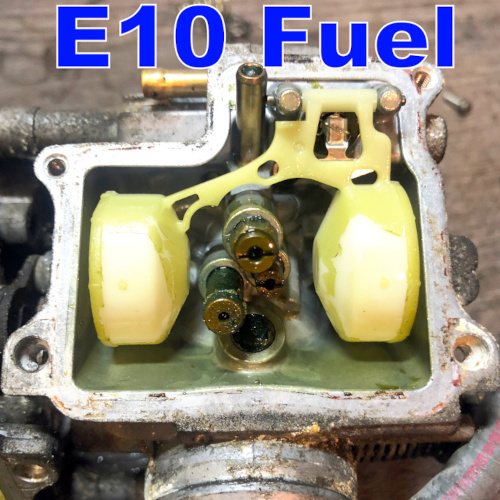Category: Motorcycle Oil Information
-

A warning about leaving E10 petrol in your motorcycle for long periods…
In September 2021 UK petrol stations replaced the standard petrol (E5 grade) with E10 fuel, but why should you drain the tank and fuel system before putting the bike into storage and why is this vitally important with bikes running E10 petrol?
-
What does a motorcycle oil do?
Ok, so you know you need to use a good quality motorbike oil in your engine, but what exactly does the oil do?
-
Motorcycle engine and engine oil terminology
A list of common phrases and terms that are ued with 2 stroke and 4 stroke motorbike engines and motorcycle oils
-
What additives are used in motorbike oils?
Oil additives are added to oils during the manufacturing process to improve the performance of motorcycle oils. Below are examples of commonly used additives. Additives are often used to improve the lubrication qualities and reduce oxidation (burning) and friction, but they can also be used for simple things like changing the colour of the oil.
-
Different motorcycle oil types
Animal and Vegetable oils: Animal oils and fats used to be used for greasing horse and cart axles, but animal fats are not suitable for motorcycle engines as they oxidise (burn) at low temperatures and will form a clogging gum or varnish. Most vegetable oils have the same drawbacks as animal fats, except castor oil.
-
Differences between monograde and multigrade motorcycle oils
Single or Mono Grade oil (e.g. SAE 40w)… This is an oil which is only suitable for use within a very narrow temperature range. SAE monograde oils usually fall into 2 main categories. The grades with a ‘w’ after them (SAE 5w, 10w, 15w and 20w) are only suitable for use in winter time because…
-
What do API and JASO mean?
API (American Petroleum Institute) Grades A Double letter ‘API’ code classifies oils as suitable for different uses. The first letter of the API grade shows the type of engine an oil can be used in (either petrol or diesel). All petrol engines are classified ‘S’ which stands for ‘spark ignition engines’. All diesel engines are…
